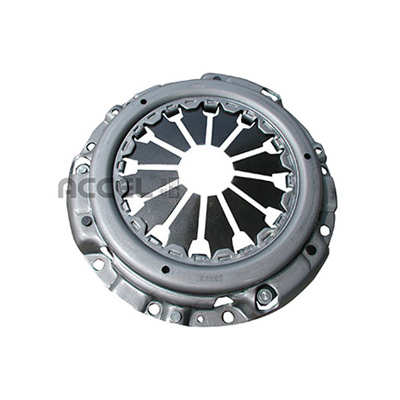- Arabic
- French
- Russian
- Spanish
- Portuguese
- Turkish
- Armenian
- English
- Albanian
- Amharic
- Azerbaijani
- Basque
- Belarusian
- Bengali
- Bosnian
- Bulgarian
- Catalan
- Cebuano
- Corsican
- Croatian
- Czech
- Danish
- Dutch
- Afrikaans
- Esperanto
- Estonian
- Finnish
- Frisian
- Galician
- Georgian
- German
- Greek
- Gujarati
- Haitian Creole
- hausa
- hawaiian
- Hebrew
- Hindi
- Miao
- Hungarian
- Icelandic
- igbo
- Indonesian
- irish
- Italian
- Japanese
- Javanese
- Kannada
- kazakh
- Khmer
- Rwandese
- Korean
- Kurdish
- Kyrgyz
- Lao
- Latin
- Latvian
- Lithuanian
- Luxembourgish
- Macedonian
- Malgashi
- Malay
- Malayalam
- Maltese
- Maori
- Marathi
- Mongolian
- Myanmar
- Nepali
- Norwegian
- Norwegian
- Occitan
- Pashto
- Persian
- Polish
- Punjabi
- Romanian
- Samoan
- Scottish Gaelic
- Serbian
- Sesotho
- Shona
- Sindhi
- Sinhala
- Slovak
- Slovenian
- Somali
- Sundanese
- Swahili
- Swedish
- Tagalog
- Tajik
- Tamil
- Tatar
- Telugu
- Thai
- Turkmen
- Ukrainian
- Urdu
- Uighur
- Uzbek
- Vietnamese
- Welsh
- Bantu
- Yiddish
- Yoruba
- Zulu
Aug . 19, 2024 02:07 Back to list
Understanding Different Sizes of Car Fan Belts for Optimal Performance
Understanding Car Fan Belt Sizes An Essential Guide for Vehicle Maintenance
When it comes to vehicle maintenance, many car owners focus on the engine, brakes, and tires, often overlooking one critical component the fan belt, also known as the serpentine belt. The fan belt is essential for the proper functioning of various engine accessories, including the alternator, water pump, and power steering pump. Understanding fan belt sizes is crucial for ensuring your vehicle operates smoothly and efficiently.
What is a Fan Belt?
The fan belt is a rubber component that connects several engine accessories to the crankshaft, allowing them to function effectively. In modern vehicles, the serpentine belt has largely replaced multiple v-belt systems. A serpentine belt is designed to wrap around several pulleys, streamlining the operation of multiple components with a single belt. These belts come in various sizes, which need to match the specifications of your vehicle for optimal performance.
Why Size Matters
Choosing the correct size for your car's fan belt is critical. If the belt is too small, it will be under constant tension, leading to premature wear and potentially snapping. On the other hand, a belt that is too large may slip off the pulleys, causing a loss of power to components and increased wear on the belt. To avoid these issues, it's essential to refer to your vehicle's owner's manual or consult with an automotive professional for the proper belt size.
Measuring Fan Belt Size
If you're looking to replace your fan belt, here are a few steps to measure the size correctly
1. Locate the Belt Open the hood and find your existing fan belt. Make sure the engine is off and cool for safety. 2. Visual Inspection Check for any visible wear, cracks, or fraying. These signs indicate that the belt is due for a replacement.
car fan belt sizes

3. Length Measurement Use a measuring tape to find the length of the belt. Ideally, you should measure from one end of the belt to the other, ensuring you follow the curvature accurately.
4. Width and Thickness Additionally, measure the width and thickness of the belt. These measurements will help you find a compatible replacement.
Finding the Right Size
Once you have your measurements, it’s time to search for a replacement. Automotive stores usually list fan belts by size, often using codes that correspond to their dimensions. It’s prudent to search online or talk to a store representative to find a belt that matches your specifications.
Many manufacturers also provide interchange numbers for different belt sizes, making it easier to find the right one if you're looking for alternatives. Remember that variations exist among different brands, so ensure that the brand you opt for is known for quality and reliability.
Regular Maintenance
In addition to being mindful of the size, regular maintenance checks are vital. Inspect your fan belt at routine intervals, looking for signs of wear and tear. Most experts recommend changing the serpentine belt every 60,000 to 100,000 miles, but it’s always best to consult your owner’s manual for your specific vehicle's guidelines.
Conclusion
Understanding car fan belt sizes is a crucial aspect of vehicle maintenance that every car owner should prioritize. By ensuring you have the correct size and regularly inspecting and maintaining your fan belt, you can prevent significant engine issues down the line. Whether you decide to tackle the replacement yourself or seek professional help, keeping your fan belt in check will contribute to the overall efficiency and longevity of your vehicle.
-
Korean Auto Parts Timing Belt 24312-37500 For Hyundai/Kia
NewsMar.07,2025
-
7PK2300 90916-T2024 RIBBED BELT POLY V BELT PK BELT
NewsMar.07,2025
-
Chinese Auto Belt Factory 310-2M-22 For BMW/Mercedes-Benz
NewsMar.07,2025
-
Chinese Auto Belt Factory 310-2M-22 For BMW/Mercedes-Benz
NewsMar.07,2025
-
90916-02660 PK Belt 6PK1680 For Toyota
NewsMar.07,2025
-
drive belt serpentine belt
NewsMar.07,2025

